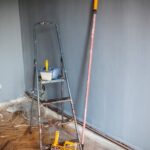Maintaining proper hygiene at home is essential for creating a clean, safe, and healthy living environment. In this article, we will explore the significance of hygiene practices in your household and the potential risks associated with neglecting them. By understanding the importance of a hygienic home, you can take proactive steps to improve cleanliness and ensure the well-being of your family.
A clean and hygienic living space promotes overall health by reducing the risk of infections and illnesses. Regular cleaning helps eliminate harmful bacteria, viruses, and allergens that may be present in your home. Poor hygiene practices, on the other hand, can create an ideal breeding ground for germs, leading to various health issues like respiratory problems, skin infections, gastrointestinal disorders, and more.
It is crucial to recognize that maintaining good hygiene goes beyond just appearance. The cleanliness of your surroundings plays a significant role in your physical well-being as well as mental health. A tidy home enhances relaxation and reduces stress levels. Additionally, proper hygiene habits instilled at home translate into healthier practices outside the house too.
By understanding why hygiene is important and its impact on health, you can embark on a journey to improve cleanliness and promote a healthier lifestyle for yourself and your loved ones. Let’s delve deeper into assessing the current hygiene level in your home and exploring effective strategies for maintaining cleanliness through establishing a cleaning routine using appropriate products.
Assessing the current hygiene level in your home
Maintaining a clean and hygienic living environment is crucial for the health and well-being of you and your family. By assessing the current hygiene level in your home, you can identify areas that require improvement and take necessary actions to create a cleaner living space.
To begin the assessment, it is important to conduct a thorough evaluation of your entire living space. Start by going through each room and inspecting various areas for cleanliness. Look out for signs of dirt, dust, or any potential sources of bacteria or germs. Pay close attention to high-touch surfaces such as doorknobs, light switches, countertops, and appliances.
Consider creating a checklist or guidelines that will help you evaluate the cleanliness and hygiene of different rooms in your home. This can include specific tasks to be performed regularly, such as dusting furniture, vacuuming carpets, mopping floors, wiping down surfaces with disinfectant wipes, and cleaning windows. By having a checklist in place, you can ensure that no area is overlooked during the assessment process.
Additionally, while assessing the current hygiene level in your home, it is important to consider factors such as indoor air quality and ventilation. Assess whether there is proper ventilation throughout your house to prevent the accumulation of moisture and mold growth. Look for signs of musty odors or dampness in bathrooms or basements which may indicate inadequate ventilation.
By thoroughly assessing the current hygiene level in your home, you can gain insight into the areas requiring improvement. This will enable you to establish an effective cleaning routine and implement necessary measures to create a clean and healthy living environment for yourself and your loved ones.
Establishing a cleaning routine
Tips for Creating a Cleaning Schedule
Establishing a cleaning routine is crucial in maintaining a clean and hygienic home. Without a consistent cleaning schedule, it’s easy for clutter and dirt to accumulate, which can lead to an unhealthy living environment. Here are some tips for creating an effective cleaning schedule that fits your household’s needs and lifestyle:
- Assess your household’s specific cleaning needs: Take into consideration the size of your home, the number of family members, and any specific areas that require extra attention or frequent cleaning.
- Break down tasks: Divide your cleaning tasks into daily, weekly, monthly, and seasonal chores. Daily tasks may include making beds, wiping down kitchen counters, and doing a quick tidy up. Weekly tasks could include vacuuming, mopping floors, and dusting surfaces. Monthly chores might involve deep cleaning activities like washing windows or scrubbing bathrooms.
- Delegate responsibilities: If you live with other family members or roommates, divide up the household chores so that everyone contributes to maintaining cleanliness.
- Time management: Determine how much time you can realistically allocate to cleaning each day or week. Set aside dedicated time blocks for specific tasks to ensure they get completed efficiently.
- Be flexible: Understand that life gets busy sometimes and it might not always be possible to follow your schedule exactly as planned. Allow for flexibility while still striving for consistency.
The Importance of Consistency
Consistency is key when it comes to maintaining a clean environment at home. By following a regular cleaning routine consistently, you can prevent the build-up of dirt, allergens, and bacteria in your living space. Consistency also helps establish good habits and reduces the stress associated with sporadic deep-cleaning sessions.
Consistency in cleaning routines is especially important for high-traffic areas such as kitchens and bathrooms where pathogens are more likely to thrive if not cleaned regularly. By committing to a consistent cleaning routine, you can minimize the risk of foodborne illnesses and the transmission of germs that can lead to infections.
Moreover, a regularly cleaned home promotes a sense of calm and well-being. Living in a clean environment can reduce stress and enhance mental clarity, making it easier to relax and enjoy your space. Consistency in cleaning also instills a sense of personal responsibility and discipline in maintaining a hygienic lifestyle.
Incorporating Cleaning into Daily Habits
Integrating cleaning tasks into your daily habits can make maintaining a clean home feel more manageable. By doing small tasks consistently each day, you can prevent clutter from piling up and decrease the time spent on deep cleaning later on. Here are some ideas for incorporating cleaning into your daily routines:
- Wipe down kitchen surfaces after meal preparation or cooking.
- Put away items immediately after use rather than letting them accumulate.
- Spend a few minutes tidying up before going to bed each night.
- Develop the habit of immediately washing dirty dishes or loading them into the dishwasher.
- Take small breaks during the day to quickly declutter common areas such as living rooms or bedrooms.
By incorporating these small habits into your daily routine, you’ll be able to maintain a cleaner and more hygienic home with minimal effort.
Choosing the right cleaning products
- Read labels and ingredients: Before purchasing any cleaning product, take the time to read the labels and ingredients list. Look for products that clearly state their purpose and contain environmentally friendly ingredients. Avoid products that contain harsh chemicals such as bleach or ammonia, as these can be harmful if not used correctly.
- Consider the surface or area being cleaned: Different surfaces require different types of cleaners. For example, you may need a specific cleaner for glass, another one for floors, and another one for fabric upholstery. Look for specialized cleaners designed for specific surfaces to ensure effective cleaning without causing damage.
- Look for eco-friendly options: If you’re conscious about minimizing your environmental impact, consider using eco-friendly cleaning products. These options are typically made with natural ingredients and have a reduced environmental footprint compared to traditional cleaning products.
- Test before use: It’s always a good idea to test a small area with a new cleaning product before using it on a larger scale. This can help prevent any potential damage or adverse reactions on sensitive surfaces or materials.
- Consider multi-purpose cleaners: To simplify your cleaning routine and minimize clutter under the sink, look for multi-purpose cleaners that can be used on various surfaces. These versatile products are often effective in tackling different types of dirt and grime.
Remember that proper storage is also essential when it comes to cleaning products. Keep them out of reach of children and pets in securely sealed containers or cabinets, away from direct sunlight or extreme temperatures.
By making informed choices about the cleaning products you use at home, you can create a hygienic living environment while minimizing potential hazards to yourself and the environment.
Recommended Cleaning Products
- All-purpose cleaner
- Glass cleaner
- Toilet bowl cleaner
- Dish soap
- Fabric stain remover
- Floor cleaner (specific to flooring material)
- Oven cleaner
- Wood polish or oil (for wooden furniture)
- Mildew and mold remover (for bathroom tiles and grout)
Proper hand hygiene practices
Here are some key tips to follow for proper hand hygiene:
Wash your hands frequently
- Wash your hands with soap and water for at least 20 seconds, especially before eating or preparing food, after using the bathroom, after touching commonly shared surfaces, and after coughing or sneezing.
- Use warm water when possible as it helps in better removal of dirt and microorganisms.
- Teach children the importance of handwashing and encourage them to do it regularly.
Master the correct handwashing technique
- Wet your hands with clean running water and apply soap.
- Rub your hands together to lather well, ensuring you reach all areas – palms, back of the hands, between fingers, fingertips, and wrists.
- Scrub your hands for at least 20 seconds; you can sing “Happy Birthday” twice to estimate the time.
- Rinse thoroughly under clean running water.
- Dry your hands using a clean towel or air dry them if possible.
Debunking common misconceptions
- Hand sanitizer is an effective alternative when soap and water are not immediately available. Look for sanitizers that contain at least 60% alcohol content.
- Antibacterial soaps are not necessarily more effective than regular soaps in preventing illness; washing properly with any type of soap is sufficient.
- Remember that wearing gloves does not replace proper hand hygiene – always wash your hands before putting on gloves and after removing them.
By following these proper hand hygiene practices, we can minimize the transfer of germs and bacteria, and promote a clean and healthy living environment for ourselves and our loved ones. Encourage everyone in your household to prioritize handwashing as an essential part of their daily routine.
Kitchen hygiene tips
In this section, we will discuss important kitchen hygiene tips that can help you maintain a clean and safe environment while preventing bacterial contamination and foodborne illnesses.
The kitchen is one of the most critical areas in your home to prioritize cleanliness and hygiene. It is where we prepare our meals and handle food, making it crucial to keep it free from harmful bacteria and other pathogens. Regular cleaning and proper sanitation practices can significantly reduce the risk of food contamination and ensure the safety of your family.
Here are some essential guidelines for maintaining kitchen hygiene:
- Clean countertops and surfaces: Wipe down countertops, cutting boards, and other surfaces before and after each use. Use warm soapy water or a disinfectant cleaner to remove any residue or bacteria present.
- Wash dishes thoroughly: Whether you hand wash or use a dishwasher, make sure to clean dishes, utensils, and cookware thoroughly with hot water and detergent. Rinse them properly to remove any soap residue.
- Sanitize kitchen utensils: Utensils such as knives, cutting boards, and peelers need to be properly sanitized after each use. Soak them in a bleach solution (one tablespoon of bleach mixed with a gallon of water) for about 10 minutes before rinsing.
- Keep appliances clean: Regularly clean appliances like microwaves, ovens, stovetops, refrigerators, and blenders to prevent the buildup of bacteria or mold that could contaminate your food.
- Store food properly: Make sure to store perishable foods in the refrigerator promptly at the correct temperatures to prevent bacterial growth. Keep raw meats separated from other foods to avoid cross-contamination.
| Kitchen Hygiene Tips |
|---|
| 1. Clean countertops and surfaces |
| 2. Wash dishes thoroughly |
| 3. Sanitize kitchen utensils |
| 4. Keep appliances clean |
| 5. Store food properly |
By following these simple kitchen hygiene tips, you can maintain a clean and safe cooking environment that reduces the risk of foodborne illnesses. Remember, consistent cleanliness and proper food handling practices are vital to keep your family healthy and free from potentially harmful bacteria.
Bathroom cleanliness and hygiene
Maintaining Clean Bathroom Fixtures and Surfaces
One of the most important aspects of bathroom hygiene is keeping the fixtures and surfaces clean and free from germs. Regularly cleaning bathroom fixtures such as faucets, showerheads, and countertops is essential in preventing the growth and spread of bacteria. Use a mild cleaning solution or disinfectant specifically designed for bathroom surfaces to ensure effective sanitization. Scrub away any build-up of grime or mold in hard-to-reach places, such as tile grout or crevices.
In addition to regular cleaning, it’s important to pay attention to high-touch areas that are prone to harboring germs. Faucet handles, doorknobs, and toilet handles should be regularly disinfected using household disinfectants or wipes. These areas are frequently touched by multiple people and can easily become reservoirs for harmful bacteria if not properly cleaned.
Keeping Proper Ventilation
A well-ventilated bathroom is crucial for maintaining cleanliness and preventing the growth of mold and mildew. Proper ventilation helps minimize moisture buildup in the room, which can lead to unpleasant odors and create an ideal environment for mold growth. Ensure that your bathroom has a functioning exhaust fan that effectively removes steam after showers or baths.
If your bathroom doesn’t have an exhaust fan, consider opening windows or using a portable fan to circulate air. Doing so will promote airflow and help reduce humidity levels in the space, ultimately supporting overall hygiene.
Taking Care of Shower Curtains and Mats
Shower curtains and bath mats are often overlooked when it comes to bathroom hygiene but can harbor bacteria if not properly maintained. It’s important to regularly clean both items to prevent the accumulation of mildew, soap scum, or dirt.
Shower curtains should be periodically washed according to the manufacturer’s instructions. Most fabric curtains can be machine-washed, while plastic or vinyl curtains can be cleaned by wiping them down with a disinfectant solution. Bath mats should also be washed regularly in hot water to eliminate any accumulated dirt or bacteria. By taking these simple steps, you can ensure a clean and hygienic bathroom environment for yourself and your family.
Improving hygiene in the bathroom is vital for maintaining a healthy living space. By prioritizing regular cleaning, disinfection of high-touch areas, proper ventilation, and care for shower curtains and mats, you can create a bathroom that promotes cleanliness and prevents the spread of harmful germs.
Bedroom hygiene and preventing allergens
Creating a clean and allergen-free sleeping environment is crucial for maintaining hygiene in the bedroom and promoting overall health. Dust mites, pet dander, pollen, and other allergens can accumulate in the bedroom and trigger allergies or respiratory problems. To ensure a hygienic bedroom and prevent allergens, there are several steps you can take.
One important aspect of bedroom hygiene is regularly washing bedding and pillows. Bed sheets, pillowcases, and duvet covers should be washed at least once a week in hot water to kill any dust mites or allergens that may be present. Pillows should also be washed or replaced every six months to prevent the build-up of dust mites. Additionally, using allergy-proof covers for mattresses and pillows can help create a barrier against dust mites.
Cleaning floors regularly is another essential step in maintaining a hygienic bedroom. Vacuuming carpets or rugs on a weekly basis will remove dust, pet hair, and other particles that can trigger allergies. Hardwood or laminate floors should be swept or damp-mopped to eliminate dust accumulation. It’s also important to minimize clutter in the bedroom as it can collect dust and promote allergen build-up.
Reducing the presence of dust mites in the bedroom can contribute to improved hygiene and better air quality. Washing curtains, drapes, and blinds regularly will eliminate dust that tends to accumulate on these surfaces. Additionally, using an air purifier with a high-efficiency particulate air (HEPA) filter can help capture allergens from the air in your bedroom.
By implementing these practices for bedroom hygiene and preventing allergens, you can create a cleaner sleeping environment that promotes overall well-being. Ensure that your bed linens are washed regularly using hot water, vacuum your floors frequently to remove allergens, reduce clutter in your room to minimize places for dust mites to hide, and consider using an air purifier for cleaner air quality.
Taking these steps will help to create a healthier and more hygienic bedroom for a better night’s sleep.
Creating a healthy living environment
One of the key factors in maintaining indoor air quality is ensuring proper ventilation throughout your home. Opening windows and doors regularly allows fresh air to circulate, reducing the accumulation of indoor pollutants, such as dust, mold spores, and volatile organic compounds (VOCs). Additionally, using exhaust fans in areas prone to moisture buildup, such as bathrooms and kitchens, helps remove excess humidity that can lead to mold growth.
Another effective measure for improving indoor air quality is the use of air purifiers. Air purifiers are designed to filter out particulate matter and other contaminants from the air you breathe. They work by pulling in air through filters that capture dust, pollen, pet dander, smoke particles, and other airborne allergens or pollutants. Consider investing in a reliable air purifier for common living spaces or bedrooms where you spend significant amounts of time.
In addition to ventilation and air purification methods, incorporating houseplants into your living space can also enhance indoor air quality. Certain plants have been shown to naturally filter toxins from the air and release oxygen. Examples include snake plants, peace lilies, spider plants, bamboo palms, and English ivy. Adding these houseplants not only adds greenery but also contributes to cleaner air.
By implementing these measures of proper ventilation, using air purifiers effectively, and incorporating houseplants into your home décor, you can significantly improve your indoor air quality. Creating a healthy living environment goes beyond just cleanliness; it is about promoting a space where you can breathe easy and thrive with optimal health.
Conclusion
Maintaining a clean and hygienic home is crucial for our overall well-being. Throughout this article, we have explored various practices and tips on how to improve hygiene at home. From assessing the current hygiene level in your living space to establishing a cleaning routine and practicing proper hand hygiene, each step plays a vital role in creating a healthier environment for you and your family.
By following the guidelines provided, you can significantly reduce the risk of illnesses and infections caused by poor hygiene practices. Regularly cleaning and disinfecting high-touch areas, such as doorknobs and faucets, can help prevent the spread of germs. Additionally, maintaining a clean kitchen by properly washing utensils and surfaces can minimize the chance of foodborne illnesses.
Furthermore, it is important to pay attention to bedroom hygiene in order to create a healthy sleeping environment. Washing bedding regularly, cleaning floors, and reducing dust accumulation are all essential steps towards preventing allergens that can trigger allergies or respiratory issues.
In conclusion, maintaining a hygienic home is not only crucial for cleanliness but also for overall well-being. By implementing the suggested hygiene practices discussed in this article, you can create a cleaner and healthier living space for yourself and your loved ones. Remember that consistency is key when it comes to cleaning routines and practicing proper hand hygiene. A clean home promotes good health and contributes to an improved quality of life.
Frequently Asked Questions
What are the 7 personal hygiene?
Personal hygiene refers to maintaining cleanliness and taking care of oneself to promote overall health and prevent illnesses. The seven key aspects of personal hygiene include regular handwashing, bathing or showering regularly, brushing teeth twice daily, flossing daily, trimming nails regularly, wearing clean clothes, and ensuring clean surroundings.
These practices help eliminate harmful germs, reduce body odor, and promote a sense of well-being.
How can I practice good hygiene at home?
Maintaining good hygiene at home is important for creating a healthy living environment for yourself and those around you. To practice good hygiene at home, start by prioritizing regular handwashing with soap and water for at least 20 seconds before eating, after using the restroom, after coughing or sneezing, and whenever hands are visibly dirty.
Keep your living space clean by regularly dusting surfaces, vacuuming floors, laundering bed linens regularly, cleaning kitchen utensils properly, disinfecting frequently touched surfaces (such as doorknobs or light switches), and emptying garbage bins on a regular basis. Additionally, it is essential to maintain personal cleanliness by taking regular showers or baths and changing into clean clothes daily.
Why do I struggle with personal hygiene?
Struggling with personal hygiene can stem from various factors that may affect an individual’s physical or mental well-being. Some potential reasons include physical disabilities or medical conditions that make it challenging to perform certain tasks associated with personal hygiene independently. Mental health issues such as depression or anxiety can also have an impact on an individual’s motivation and ability to prioritize self-care activities like bathing or grooming.
Additionally, lack of education on proper hygiene practices or limited access to resources like clean water can also contribute to struggling with personal hygiene. It is crucial to address these underlying factors through seeking professional help if needed and finding strategies that work best for each individual to improve their personal hygiene routines.

I’m thrilled to have you here as a part of the Remodeling Top community. This is where my journey as an architect and remodeling enthusiast intersects with your passion for transforming houses into dream homes.





